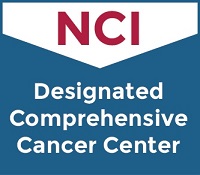Hyperthermic Intraperitoneal Chemotherapy (HIPEC)
Hyperthermic intraperitoneal chemotherapy (HIPEC) is a procedure used to treat gastrointestinal and abdominal cancers that have spread to the lining of the abdomen (peritoneum). It circulates a heated chemotherapy solution throughout the abdominal cavity to kill cancer cells that surgery is unable to remove.
How HIPEC Works
HIPEC is the second step in a two-part procedure to get rid of cancer in the abdomen.
The first part is cytoreductive surgery (CRS), when the surgeon cuts out visible tumors and surrounding tissue. The goal is to remove as many cancer cells as possible.
The HIPEC portion of the procedure happens after surgery. A heated chemotherapy solution — sometimes called a “hot chemotherapy bath” — kills remaining microscopic cancer cells as it circulates throughout the abdomen. Patients lie on a cooling pad while receiving the solution.
The HIPEC period has a fixed time limit of one to two hours, while the surgery length depends on the extent of cancer. The entire procedure takes between four and 10 hours.
Minimally Invasive HIPEC
In some rare cases, minimally invasive laparoscopic HIPEC can be performed, but open HIPEC is the standard technique at University of Maryland Greenebaum Comprehensive Cancer Center (UMGCCC). It gives the surgeon easier access to organs, increases visibility and provides better outcomes.
Recovery After HIPEC
Most patients stay in the hospital for 5 to 7 days. Many return to their daily activities and work about a month after the procedure.
Who Is a Candidate for HIPEC?
HIPEC is a recommended procedure for patients whose cancer has spread to the peritoneum. It's typically considered for patients with specific types of abdominal or gastrointestinal cancers, such as:
- Appendix cancer
- Colorectal cancer
- Pancreatic cancer
- Liver cancer
- Ovarian cancer
- Mesothelioma
HIPEC Benefits
HIPEC offers a few benefits over traditional cancer treatment:
- More effective – Administering chemotherapy solution in a single session where it directly contacts cancer cells allows for a higher concentration of the drug to reach tumors. The solution’s high temperature also makes it more effective.
- Fewer side effects – HIPEC avoids exposing healthy organs in other parts of the body to chemotherapy, limiting pain, nausea and other side effects.
- Improved survival rate – HIPEC has improved the five-year survival rate for patients with certain cancers, depending on where the cancer originated.
HIPEC Side Effects and Risks
Possible side effects from the HIPEC procedure are the same as traditional chemotherapy, including pain, nausea, vomiting, diarrhea and fatigue. The risks are similar to those of any surgery, like infection, blood clots and discomfort.
Getting HIPEC at UMGCCC
The UMGCCC surgeons and oncology experts work closely together to provide:
- A highly individualized treatment plan for each patient
- Cutting-edge technologies and therapies in cancer care
- Clinical trials and ongoing research into improving treatments
- Immediate access to care
Contact Us About HIPEC
For more information about HIPEC, please call UMGCCC's Division of Surgical Oncology at 410-328-7320.
For information on any of the cancer care programs or services at UMGCCC, please call 1-800-888-8823 or our Patient Referral Office at 410-328-7904.
To hear more about successful HIPEC at UMGCCC, read our Patient Success Stories.



